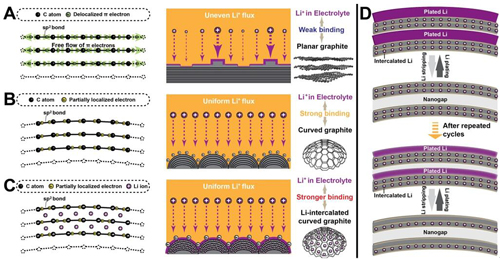Scientists Develop an Efficient and Stable Li Reservoir in Spherical Carbon Granules for High Energy Density Li Metal Batteries
Owing to its low molecular weight, small ionic radius, and low redox potential, lithium metal has emerged as an attractive anode for battery technology. However, the growth of dendrite Li and low Li utilization concerning the Li anode still challenges its commercial application.
The overwhelming appeal of graphitic carbon materials for Li-battery research lies in their suitably layered structure and high conductivity.
Recently, a research group at Institute of Chemistry of Chinese Academy of Sciences (ICCAS) led by Prof. GUO YuGuo reported that the safety and long lifespan of Li metal anode can be improved by an efficient and stable Li metal reservoir based on spherical carbon granules. This study was published on J. Am. Chem. Soc. (2017, 139, 5916–5922).
The researchers found that the improved performance is largely ascribed to the highly-graphitized, onion-like nanostructure of spherical graphite host and the combined Li storage in the host. On the one hand, the curved surface of spherical carbon helps to localize the π electrons. On the other hand, an electron deviation from Li to C further elevates the negativity of C atoms after Li intercalation to form compound. The result is an enhanced binding between C host and Li+, which further contributes to uniform Li deposition during the plating process. Moreover, the active Li+ preintercalated into the graphite have intentionally reserved as optional Li source to offset the irreversible Li loss during cycling. The hybrid Li anode demonstrates a high Li utilization of > 95% and an improved long cycling performance.
This work not only provides unique insights on the optimal design of metal Li anode for rechargeable Li batteries, but also provides new visions for research in practical rechargeable metal batteries.

Interpretation of science behind the improved plating/stripping performance of the carbon modified Ni foam (CMN), including: electron/charge distribution and Li deposition. (Image by Prof. GUO Yuguo)
Contact:
Prof. GUO Yuguo
Institute of Chemistry, Chinese Academy of Sciences
Email: ygguo@iccas.ac.cn





